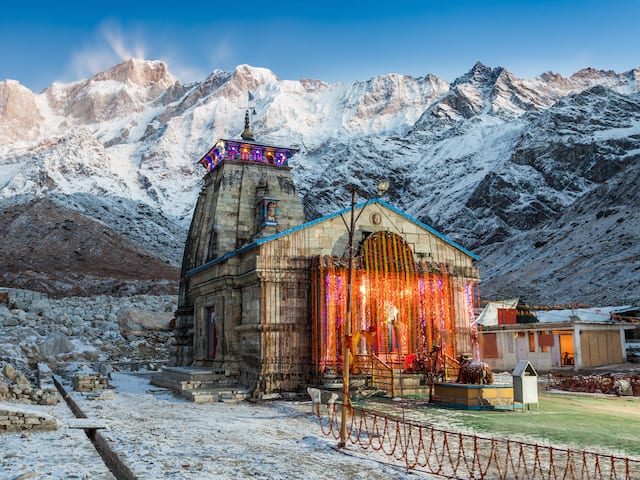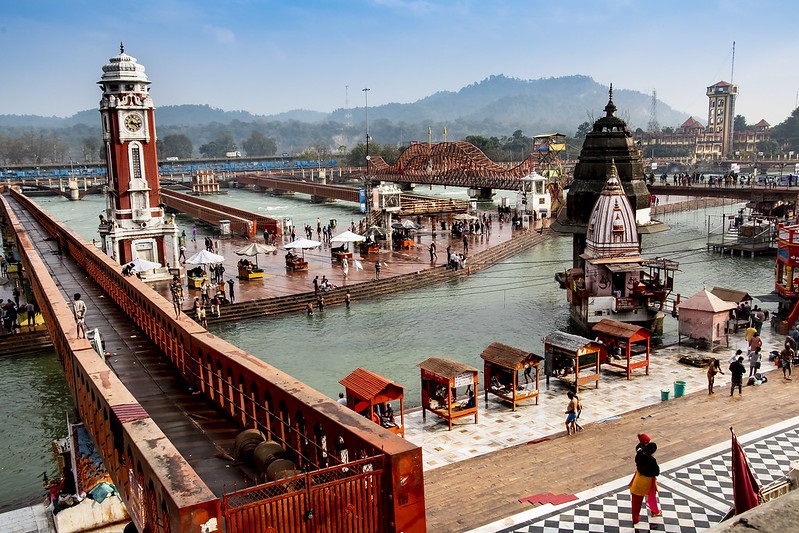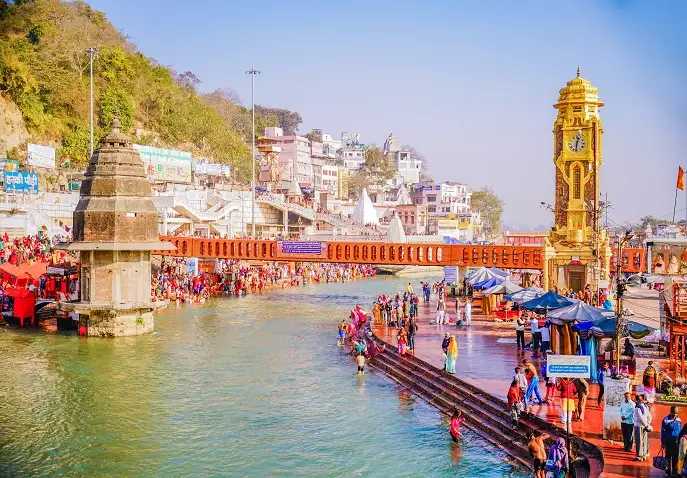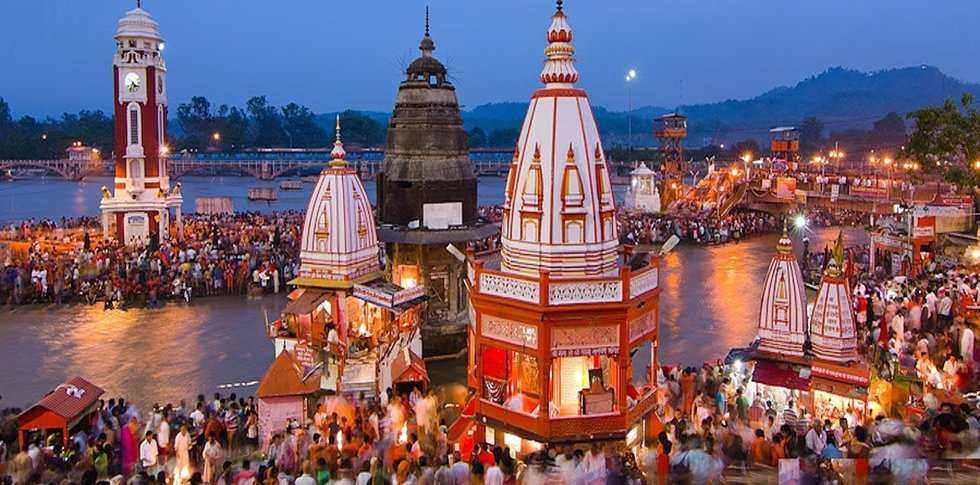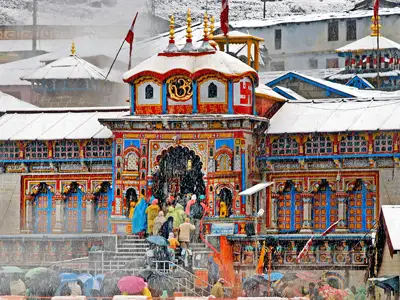Char Dham 11 NIGHTS 12 DAYS
Lets Start Exploring With India Tour By Car And Driver
Tour Summary
Itinerary
Duration – 12 Days
Places – Delhi, Haridwar, Yamunotri, Gangotri, Kedarnath, Badrinath, Rishikesh, Delhi.
Day 01: Early morning arrival in Delhi; local travel between Delhi and Haridwar; overnight stay in Rishikesh.
If you wish to visit Haridwar and Rishikesh on a spiritual vacation from Delhi in a single day, it is crucial to be there early in the morning because during rush hour, it takes longer to visit both cities. When you arrive in Delhi, take a 4- to 5-hour journey to Haridwar, which is the first destination on your Chardham Pilgrimage tour from Delhi. Haridwar means “entryway to god” (Hari). When you arrive in Haridwar, dip in the Ganges at Har-Ki-Pauri, the city’s principal ghat, and see some of the city’s most prominent temples. After that, drive the hour to Rishikesh from Haridwar. Check into the hotel you had previously reserved in Rishikesh, and then take a walking tour of the city, stopping at the Ram and Laxman Jhula, a famous iron suspension bridge that spans the Ganges River in Rishikesh. You can also visit other well-known Ashrams like Parmarth Niketan Ashram and Sivananda Ashram. Participate in Rishikesh’s renowned Ganga aarti in the evening.
Day 02:- Rishikesh to Barkot
Today, after finishing the yatra registration procedures, go on your Chardham Yatra from Delhi to Yamunotri Dham. En route to Barkot, you may stop in Mussoorie, a well-known hill resort in Uttarakhand. The distance from Rishikesh to Barkot is 170 kilometres, the drive takes 5 to 6 hours, and it’s uphill, so don’t forget to pack a puke bag and medication for headaches and vomiting. Barkot is the final major town close to Yamunotri Dham. Check into the hotel you had reserved when you arrived. Barkot city is located beside the Yamuna River, therefore you may take a walk there in the evening.
Day 03:- Barkot to Yamunotri Dham To Barkot.
This morning, start your journey to Yamunotri Dham by taking a 45-kilometer, two-hour drive from Barkot to Janki Chatti, the end of the motorable road. From there, you must hike six kilometres each way to get to Yamunotri Dham. A further draw to Janki Chatti is its hot spring. If you don’t want to hike, there are also pony, palki, and dolly services available from Janki Chatti to Yamunotri.When you arrive, go for a visit to the major Yamunotri dham temple. There, you can see the idol of the goddess Yamuna, which is made of black marble and was originally constructed in the 18th century by Tehri Naresh. The Jaipur queen later had it rebuilt in the nineteenth century. Visit Surya Kund, known for its hot springs where prashad is made, and Divya Shilla, a reddish-brown rock. Trek back to Janki Chatti after performing Yamunotri Dham Darshan in the same manner, and then drive to the Barkot hotel you had previously reserved. After a busy day of activity, unwind in one of your Barkot hotels.
Day 04:- Barkot to Harsil
Your journey to Gangotri Dham begins today by travelling by car from Barkot to Harshil, a 160-kilometer drive that takes six hours to complete. Don’t forget to take a break for tea or a snack at Radi Top, a viewpoint with a panoramic view of the Yamuna valley and Ganga valley on either side. On the way to Gangotri, the village of Harshil is located in the Uttarkashi district. One of Discover Uttarakhand’s undiscovered and undiscovered beauties is the valley of Harsil. Surrounded by the vast Himalayan range, lush deodar forest, and the river Bhagirathi, Harsil is also home to several apple orchards.Many trekking treks to Uttarakhand enter through Harsil. You can visit Mukhba Village, which is 1 km from Harsil and where Goddess Ganga spends the winter. After checking in at your accommodation in Harsil, you can spend the rest of the evening admiring nature.
Day 05:- Harsil to Gangotri to Uttarkashi
Prepare for your visit to Gangotri Dham this morning by driving the 25 km (1 hr) from Harsil to Gangotri. Visit Gangotri Temple Dham, which was built in the 18th century by Nepali Gurkha General Amar Singh Thapa and is located on the bank of the holy river Bhagirathi, for puja and darshan after arrival. River Ganga’s source is the Gangotri glacier’s Gaumukh, which is 19 kilometres away from the challenging Gangotri Dham shrine. After meeting the River Alanknanda at Devprayag, the Bhagirathi River, which originated from Gaumukh, became the River Ganga.On the rock where Shiva received Ganga in his matted hair during the winter in Gangotri dham, you may observe a submerged Lord Shiva shivlinga. Drive the 100 kilometres (three hours) to Uttarkashi after the Gangotri darshan. You can visit Kashi Vishwanath Temple and other temples in Uttarkashi later in the evening.
Day 06:- Uttarkashi to Guptkashi/ Sitapur (200kms/6-7hrs)
You must travel to Guptkashi or Sitapur today to see Kedarnath, the third and most well-known dham. The closest location to Gaurikund, the starting point for the walk to Kedarnath Temple, is Sitapur. After a lengthy drive, rest at a hotel reservation in Guptkashi or Sitapur. If you plan to visit Kedarnath by helicopter, it is advised that you stay in Guptkashi or Sitapur, depending on where your helipad is located and where it is closest to. This is because the majority of the hotels are only located in these locations.
Day 07:- Guptkashi/ Sitapur to Kedarnath temple to Guptkashi/ Sitapur
There are three ways to go to the Kedarnath temple in the Kedarnath valley today, which is a crucial day in your Chardham yatra trek. 1) Helicopter to Kedarnath the same day 2) Pony darshan on the same day 3. Trekking This is the hardest and takes at least two days. For helicopters, you can depart from your helipad in the morning, depart for your hotel after the darshan, and then return to the helipad. Typically, Kedarnath helicopter passengers receive VIP admission and are required to depart from the helipad within 30 to 60 minutes.From Sonmarg to Gaurikund, the starting point for the walk or pony ride, you must take a local taxi. At Gaurikund, there is a hot spring where you can bathe. Each side of the walk from Gaurikund to the Kedarnath shrine is 16 kilometres, and Rambara serves as the halfway point. Pony travel takes about four to five hours, and the journey takes about eight hours. When you arrive, visit the Lord Shiva-dedicated old Kedarnath temple. You will be in awe of the temple’s magnificence as it is encircled by snow-capped mountains. After the darshan, go back to the Sitapur hotel you had already reserved.
Day 08:- Guptkashi/ Sitapur to Badrinath (190kms-7-8hrs)
The travel to Badrinath is long today as well, so it’s crucial to leave Sitapur early in the morning in order to be there by 6 o’clock. The entire trip from Sitapur to Badrinath is uphill, and you will pass through a number of lush woods. Midway through, you can pause for lunch and refreshments. The largest city close to Badrinath is Joshimath, which serves as the starting point for numerous well-known treks and day trips. On the Alaknanda River’s bank sits the town of Badrinath temple. Check into the hotel in Badrinath upon arrival.
Day 09:- Badrinath temple darshan and Badrinath to Srinagar Via Rudraprayag
Go to the Lord Vishnu-dedicated Badrinath Temple early in the morning. It is one of the Chardham sites in Hinduism, along with Rameshwara, Dwarka, and Jagannath Puri. It is suggested to have a bath in Taptakund, a hot spring in Badrinath that is only a short distance from the Badrinath temple, before visiting the temple.Additionally, you can go to Chamoli district’s Vyas Gufa, Ganesh Gufa, and Mana village, the last Indian village before the Indo-China border. After breakfast at the hotel, check out and travel to Srinagar, stopping along the road to see the well-known Rudraprayag temple. One of Uttarakhand’s five revered Prayags, Rudraprayag is where the Mandakini and Alaknanda rivers converge. Check into a hotel in Srinagar upon arrival.
Day 10:- Srinagar to Delhi Drop (340kms/8-9hrs)
It is always advisable to book a late evening departure from Delhi in order to avoid any rush. This morning, after breakfast, pack your bag with plenty of unforgettable and lifelong memories of the Spiritual Chardham yatra tour packages. Then, check-out from the hotel and be dropped off at the airport or railway station in Delhi in accordance with your return tickets.

